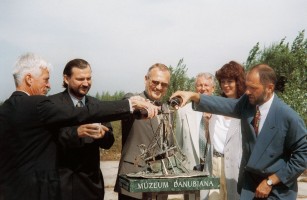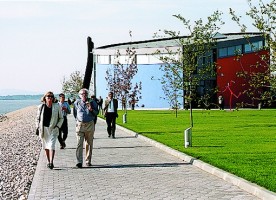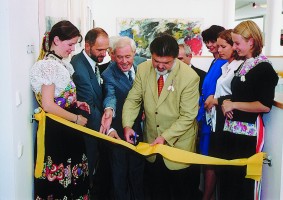Conditions for establishing the Danubiana Meulensteen Art Museum as a private institution changed after the fall of the totalitarian regime in 1989. Until then acquisitions and museum activities were exclusively controlled by state institutions. Founded by the Dutch entrepreneur and art collector Gerard H. Meulensteen, the Danubiana launched its activities on 9 September 2000.
The museum is set in a beautiful location on the Danube peninsula projecting out into the Gabčíkovo Dam. The main idea of building the museum was to promote contemporary Slovak art and young artists in particular. The Danubiana achieved public and professional recognition for its prestigious exhibitions, and for building up its collection including international paintings, Slovak contemporary art and international outdoor sculptures, and for its specialist publications. Exhibitions of foreign artworks have contributed to the recovery of the art scene and created conditions for a useful comparison with foreign art, something that barely existed until then. Over the years the Danubiana has become a place where visitors can see exhibitions of renowned international artists. The museum has held numerous exhibitions and presented works of outstanding figures of the European and world art scene (Karel Appel, Magdalena Abakanowicz, José Guinovart, Martín Quirino, the Cobra artists, Zoltan and Madeleine Kemeny, Sam Francis, Robert Combas, Karl Prantl), as well as large projects of contemporary art, for example Dutch, Austrian, Hungarian, Czech and Russian art.
Since 2012 the museum has changed its status and become a non-profit public institution with the majority of state participation. This partly intensifies the museum’s activities towards the presentation of Slovak art of the second half of the twentieth century with links to the current development. After the completion of the museum, there will also be permanent exhibitions of modern and contemporary Slovak and European art.







